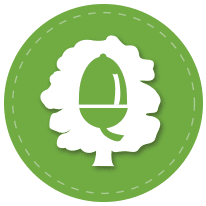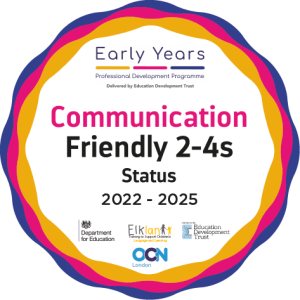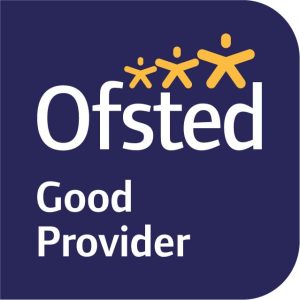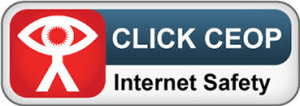Personal, Social and Emotional Development
This area of learning has a focus on Making relationships, Developing self-confidence and self-awareness, and Managing feelings and behaviour.
This area involves helping children to develop a positive sense of themselves, and others; to form positive relationships and develop respect for others; to develop social skills and learn how to manage their feelings; to understand appropriate behaviour in groups; and to have confidence in their own abilities.
This area develops children’s positive sense of themselves. It teaches about having respect for themselves and others, developing social skills and a good attitude to learning.
Children need to be confident in making choices, taking part in a variety of activities and concentrating on their task. It is also concerned with how your child interacts with other children and adults, learning to share, and play co-operatively in small groups and occasionally larger ones. They need to be able to express and control their emotions, to develop respect and consideration for other people’s needs. It is also about your child’s ability to look after themselves, for example, going to the toilet, putting on their coat etc.
Communication and Language
Communication and Language encompasses Listening and attention, Understanding and Speaking.
This area of learning involves giving children opportunities to experience a rich language environment; to develop their confidence and skills in expressing themselves; and to speak and listen in a range of situations.
It provides children with opportunities for speaking and listening and ignites children’s interest in reading and writing. Staff support children to communicate their ideas and thoughts with each other and with adults. The environment contains signs, symbols, words, songs and notices. They also have books and pictures that take into account interests, backgrounds and cultures.
Through positive relationships children respond to eye contact, verbal and non-verbal interaction; they anticipate and initiate communication with others, learning to respond in many ways. They do this through listening to others, watching and copying them and through joining in with rhymes, stories and games using sounds and words. They learn to figure out the important features of communication and to respond.
Understanding what has been said to them, saying things to others, being treated as a communicator and sharing in talk with others is all part of the communication process. Young children will show understanding in many ways including by responding appropriately to what somebody has said, following instructions and responding to and asking questions to check out meaning. Their understanding of what is being said to them far outweighs what they can say. Every experience a child has will extend their understanding if adults are there sharing the experience and helping them.
As young children move through their first attempts at communication, they begin to say words and can communicate meaning even though they may not have words for all the things they want to tell us about. The store of words that children build up will help them to be effective and skilful communicators and, with help, and through hearing correct language use, they will internalise the rules of grammar – sometimes trying out combinations of words to make short phrases and sentences – like ‘me do that!’ or ‘my going to the park’. In this process they develop ways to express themselves based on their own ideas and experiences.
Language development is very important as it is the basis for all learning. Extending their vocabulary provides children with a tool to express themselves.
Physical Development
This area of learning covers Moving and handling as well as Health and self-care and involves providing opportunities for young children to be active and interactive and to develop their co-ordination, control, and movement. Children must also be helped to understand the importance of physical activity, and to make healthy choices in relation to food.
This area provides opportunities for children to be active and develop their co-ordination, manipulation and movement. It develops understanding of the importance of being physically active and eating healthily. The children are supported in their understanding of exercise, sleep and eating to promote health. We encourage energetic physical play. Large equipment and toys are used outside and the children have the opportunity to run freely, climb, skip, jump and learn to balance on equipment.
Small equipment, for example, hoops, bats, balls and bean bags encourage co-ordination and skill acquisition. Fine manipulative skills are developed with construction toys, jigsaws, threading, use of small tools e.g. scissors. Children need to be able to manipulate and control small items to enable them to use a pencil and therefore make shapes and later, letters and numbers.
Snack times and cooking sessions are utilised to promote social skills and the importance of making healthy food choices.
Literacy
This area of learning covers Reading and Writing. A selection of books are available throughout the Nursery. We don’t generally teach reading directly as children are at different stages, but we may introduce activities that are a pre-requisite to learning to read. Pre-writing skills are encouraged in many areas of the nursery. Children make marks with crayons, paint, pencils and other tools in the sand, soil, dough and clay.
Children need to go through these stages before they are able to control a pencil well enough to ‘write’ a letter/number (so even if it looks like scribble, it is part of a process).
When you show your child ‘writing’, we suggest that it is predominantly ‘lower case’ letters e.g. a, b, c, d, e, f, g etc. not capitals. Please ask, we are happy to share good practice.
Mathematics
This area of learning focuses on Numbers and Shape, space and measures.
This area involves providing children with opportunities throughout the Nursery to develop and improve their skills in counting, understanding and using numbers, calculating simple addition and subtraction problems; and to describe shapes, spaces and measures.
The children have opportunities to explore, practise, learn and talk. They practise skills and gain confidence and competence. Staff use mathematical words and ideas when supporting children in their play. We have resources for counting, calculating and shape available indoors and outdoors. Stories, songs and imaginative play also help with mathematical understanding.
Mathematics is happening all the time in young children’s lives, e.g. out shopping, in the car, at home, in the cafe. We encourage you to make it fun for them.
Understanding the World
This area of learning focuses on People and communities, The world and Technology.
It involves guiding children to make sense of their physical world and their community through opportunities to explore, observe and find out about people, places, technology and the environment.
This area of learning offers children opportunities to explore and observe the environment, living things and objects. They have first-hand experiences to observe, predict, make decisions and discuss through opportunities to experiment and investigate through the natural environment interest tables, e.g. magnets, mirrors, colours and natural objects.
They have opportunities to bake and help in the making of the snack, e.g. cakes, toast, crackers, sandwiches, cut up fruit.
Children have access to computers and use programs which are designed for young children and offer an introduction to Information Technology and the basic skills required. We have a selection of ICT equipment. ICT is about learning to control equipment as well as using computers. ICT includes microphones, recorders and robotic toys as well as every day equipment e.g. photocopier and microwave.
Sense of time and place – We use the immediate environment as well as further afield; we discuss weather, countries, maps etc. Children can discuss their past and what they remember – we use artefacts and resources to show history in a simple way. Staff ask open-ended questions like, “How can we..?” and “What would happen if…?” are used.
Expressive Arts and Design
This area of learning includes Exploring and using media and materials and Being imaginative.
The children explore and play with a wide range of media and materials, as well as providing opportunities and encouragement for sharing their thoughts, ideas and feelings through a variety of activities in art, music, movement, dance, role-play, and design and technology.
This area supports children’s curiosity and play. They explore and share their thinking, ideas and feelings in music, in art, movement and dance, role play and technology. The children are supported to value their own unique ideas and those of others rather than reproducing those of someone else. The environment offers a stimulating but calm creative area where originality and expressiveness are valued. Children are allowed to express themselves through various types of representation.
It is the process that is important and will not always result in a recognisable finished product. Ask them about it and they will explain their ideas! It is important they use their own imagination in their pictures, designs and models.
Music/Drama involves listening to different sounds, making sounds, singing rhymes and songs. Most children enjoy role play and we also use music, rhymes, stories and puppets to stimulate children to act out roles in the life area which could be a cafe, shop, hospital, garage or vets.






